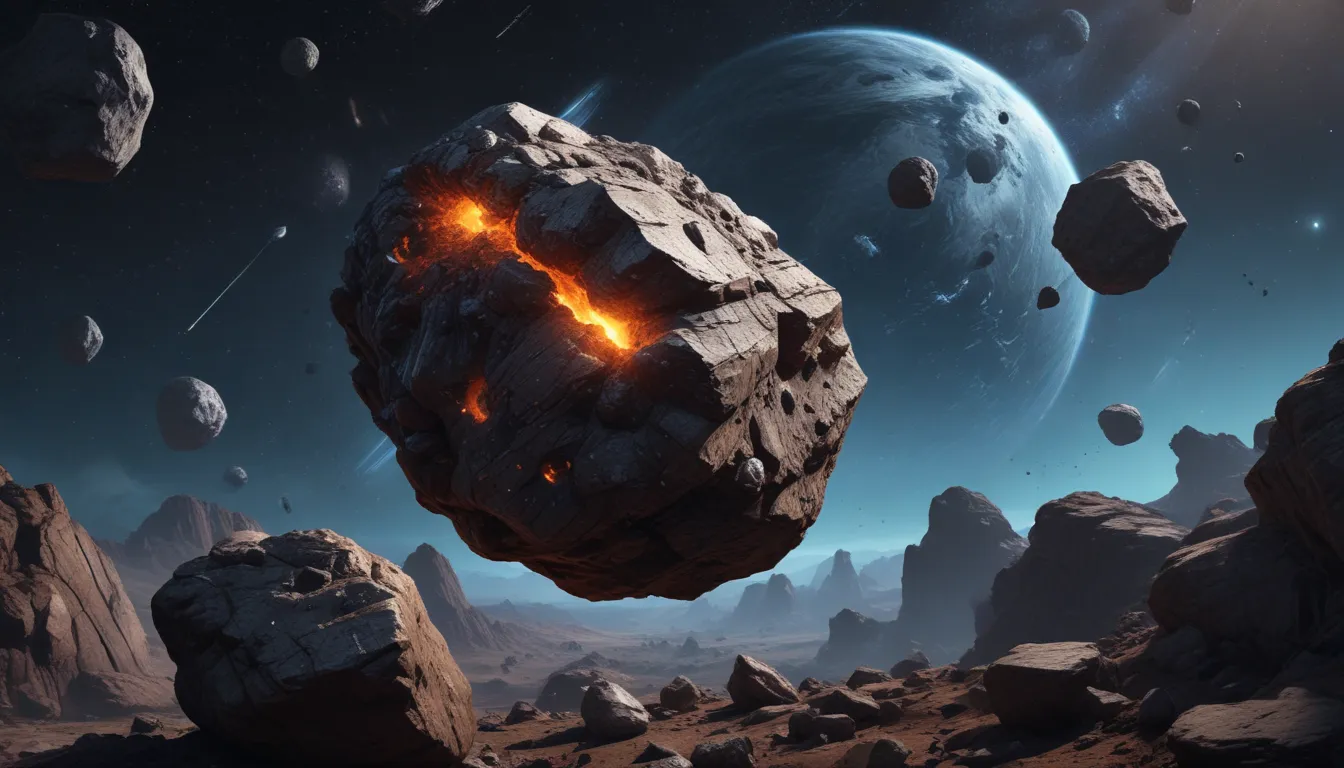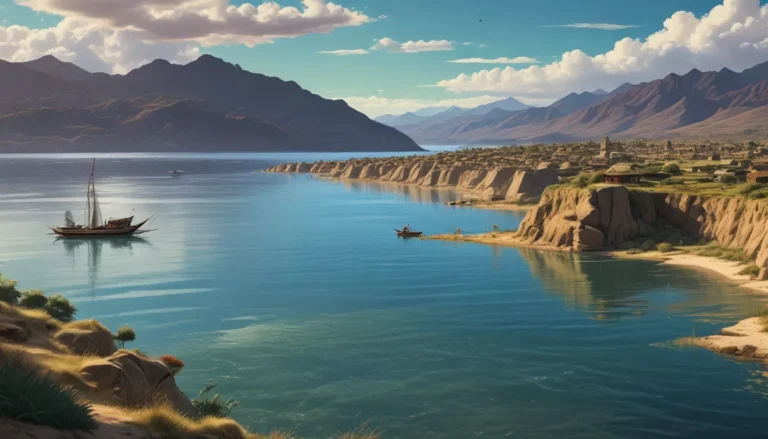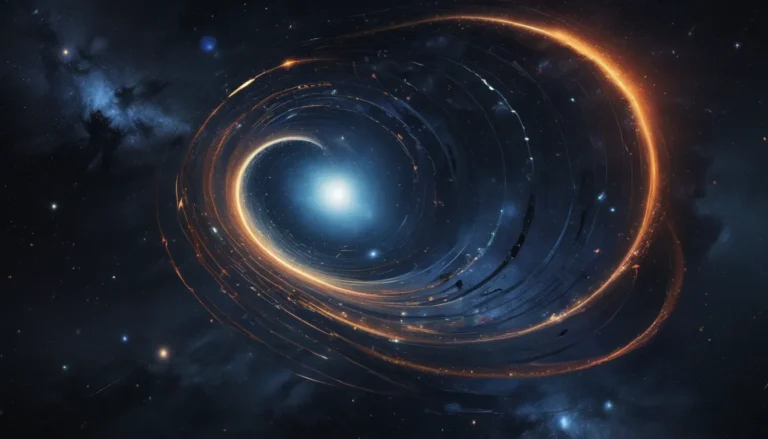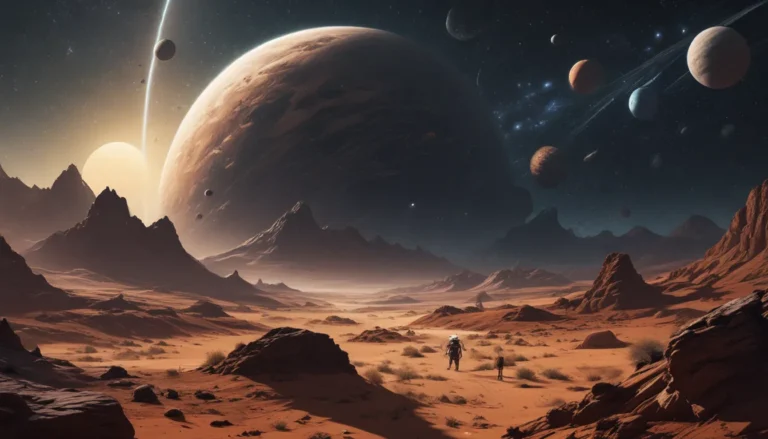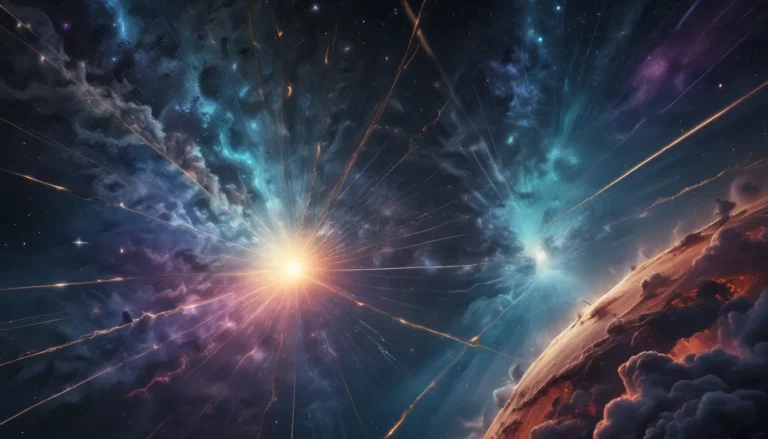The pictures we use in our articles might not show exactly what the words say. We choose these pictures to make you interested in reading more. The pictures work together with the words but don’t take their place. The words still tell you the important facts.
Are you ready to embark on a journey through the awe-inspiring world of asteroids? These celestial objects, often referred to as "space rocks," hold a myriad of secrets that continue to captivate scientists and space enthusiasts worldwide. From their origins to their potential impact on Earth, asteroids offer a glimpse into the vastness and wonders of our universe. Let's delve into 19 unbelievable facts about asteroids that will expand your understanding and appreciation of these cosmic marvels.
Key Takeaways:
- Asteroids, rocky objects that orbit the Sun, come in various sizes, shapes, and compositions, shaping Earth's history and fueling scientific curiosity. June 30th, celebrated as Asteroid Day, aims to raise awareness and inspire action to protect Earth from potential impacts. Ongoing research and space missions provide valuable insights into asteroids and their role in our solar system.
The Origins and Diversity of Asteroids
Asteroids, also known as minor planets or planetoids, are remnants from the early days of our solar system, predominantly located in the asteroid belt between Mars and Jupiter. Varying in size from tiny pebbles to massive objects like the largest known asteroid, Ceres, which is about 590 miles (940 kilometers) in diameter, asteroids exhibit a wide range of sizes, shapes, and structures.
Composition and Characteristics
Composed mainly of rocky materials and metals, asteroids can contain silicate rocks, metal alloys, and even trace amounts of water and organic compounds. Their diverse compositions offer insights into the formation and evolution of these enigmatic celestial bodies.
Close Encounters and Impact Craters
Some asteroids venture close to Earth, with a few posing potential threats of impact. The collision of asteroids with planets or moons creates impact craters, providing valuable information about the geological history of celestial bodies. The Chicxulub impact in Mexico, believed to have led to the extinction of dinosaurs approximately 66 million years ago, remains one of the most notable asteroid impact events.
Exploration and Mission to Asteroids
Space agencies and organizations have initiated missions to study asteroids up close. NASA's NEAR Shoemaker spacecraft successfully landed on the asteroid Eros in 2001, while other missions like Hayabusa have collected samples from asteroids, offering valuable data and imagery for scientific research.
Asteroid Mining and Classification
The concept of asteroid mining, driven by the abundance of minerals and precious metals on asteroids, has gained traction as a potential future resource for Earth's needs. Asteroids are classified into various types based on their composition, such as C-type (carbonaceous), S-type (silicate), and M-type (metallic), aiding in understanding their origins and evolution.
Future Exploration and Asteroid Deflection
As our understanding of asteroids expands, efforts to explore them further and study their dynamics intensify. With advancements in space technology, future missions aim to conduct detailed studies, collect more samples, and develop asteroid deflection techniques to safeguard Earth from potential impacts.
Celebrating Asteroid Day and Discovering Regolith
Asteroid Day, observed on June 30th, serves as a global awareness campaign to educate individuals about asteroids and inspire actions to protect Earth. Asteroid surfaces are covered in regolith, a layer of loose debris and crushed rock that provides insights into the geological history and composition of these celestial bodies.
As we delve deeper into the realm of asteroids, we uncover a plethora of remarkable facts that underscore their significance in our understanding of the universe. From their role in shaping celestial bodies to their potential impact on Earth, asteroids continue to be a source of wonder and exploration for scientists and enthusiasts alike.
In conclusion, asteroids stand as enigmatic celestial objects that offer valuable insights into the mysteries of our solar system's past and future. As we strive to unravel their secrets and protect our planet from potential impacts, the exploration of asteroids remains a cornerstone of scientific discovery and curiosity.
FAQs About Asteroids:
Q: How big are asteroids?
A: Asteroids vary greatly in size, ranging from tiny boulders to objects hundreds of kilometers in diameter.
Q: Do asteroids pose a threat to Earth?
A: While most asteroids pose no immediate threat, a small percentage could potentially collide with Earth. Efforts are underway to monitor and develop strategies for planetary defense.
Q: Can asteroids contain valuable resources?
A: Yes, asteroids are believed to hold valuable resources such as precious metals, water, and rare minerals, sparking interest in asteroid mining for future exploration.
Q: Have missions been sent to study asteroids?
A: Several missions, including NASA's OSIRIS-REx and Japan's Hayabusa2, have explored and studied asteroids, providing valuable insights into these celestial objects.
Q: Are there plans to deflect asteroids from Earth's path?
A: Scientists are actively researching methods to potentially deflect asteroids that pose a threat, utilizing techniques like gravity tractors and kinetic impactors.
Embark on a journey through the cosmos as we unveil the wonders and mysteries of asteroids, offering a glimpse into the extraordinary realm beyond our planet. With each discovery and exploration, we deepen our understanding and appreciation of these celestial marvels. Join us in celebrating the marvels of asteroids and the endless possibilities they hold for our exploration and discovery of the universe's secrets.
